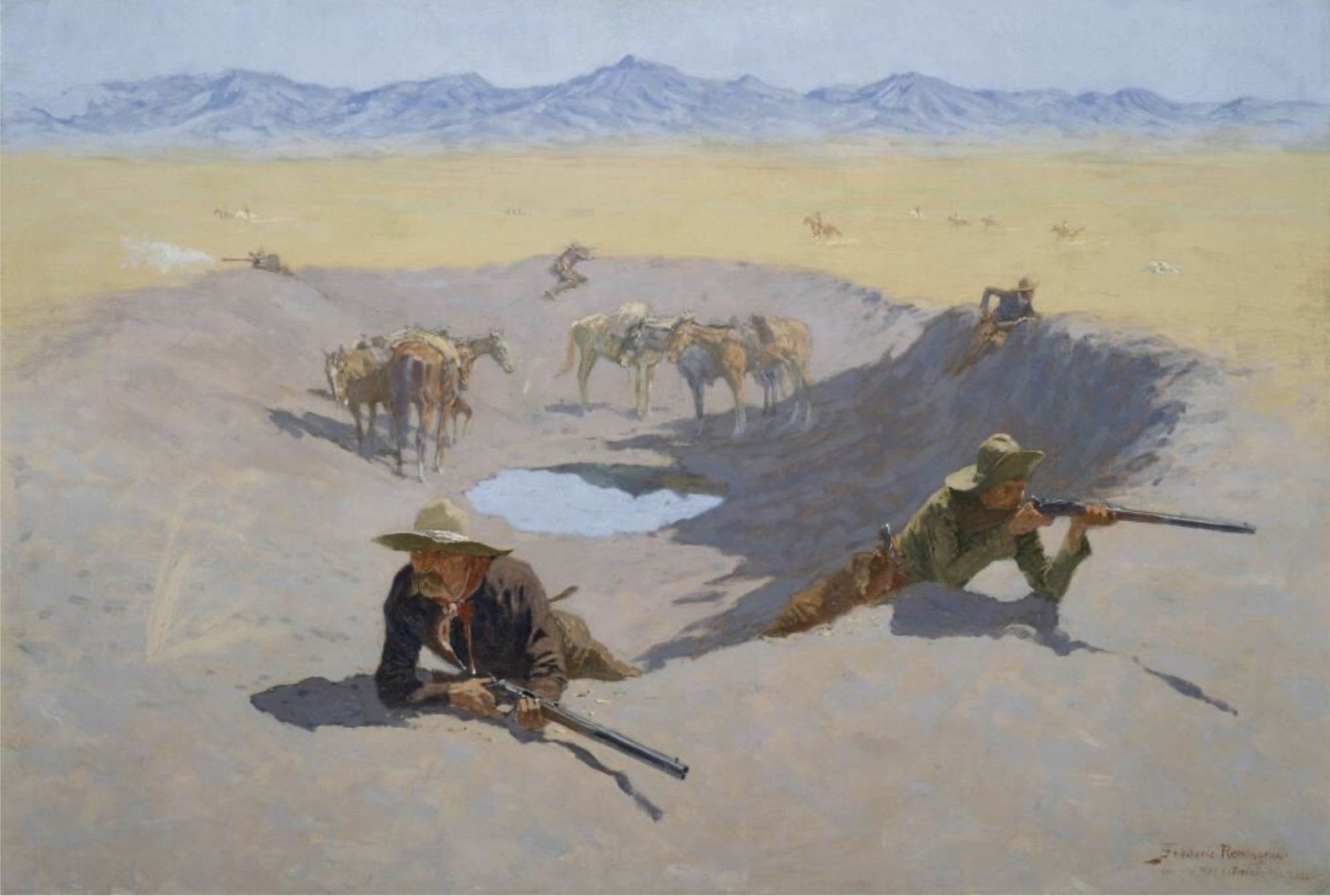PST Arrives Early at the Autry
 |
| John Twachtman, Edge of the Emerald Pool, Yellowstone, 1895. Stark Museum of Art, Orange, Texas |
"Out of Site" explores how the powers that be have used picture-making innovations to document the Western landscape. The high point of a small selection of paintings is American Impressionist John Twachtman's Edge of the Emerald Pool, Yellowstone, lent from Texas' underappreciated Stark Museum, east of Houston. Predating Monet's Water Lilies, and in some ways more radical, Edge of the Emerald Pool zooms in on a boiling-hot pool of blue-green bacteria, a Darwinian and literal Origin of the World.
The Emerald Pool was on Gilded Age bucket lists. New York socialite J. Sanford Saltus deemed it
"…the most beautiful thing in the way of wonderland water I have ever seen, and I have seen many wonderful and beautiful lakes, lagoons, ponds, and pools in Europe, Asia, Africa, South America, Canada Mexico, the Mediterranean and West India Islands… Fill a thin goblet with Crème de Menthe, on the top drop a few 'beads' of absinthe, and you will have a faint, only a faint idea of the glistening green glory of Emerald Pool, which can be compared to nothing unless one can imagine liquefied Chinese fire or the unknown, unnamable tones seen under the influence of an anesthetic or during delirium."
Along with Whistler's Nocturne in Black and Gold, the Falling Rocket, Emerald Pool traces an American pathway to modernist abstraction.
 |
| Frederic Remington, Fight for the Waterhole, 1903. Museum of Fine Arts, Houston |
 |
| John Divola, Blue with Exceptions, 16576 (12_16_2020), 2020. Courtesy of the artist, (c) John Divola |
Photographs span Carleton Watkins and Timothy O'Sullivan to John Divola and Richard Misrach. I was most impressed, however, with a display of facsimile images of atomic bomb tests by Harold Edgerton. The MIT professor is otherwise known as the van Eyck of stroboscopic photography. "Doc" Edgerton invented a distinct technology, the Rapatronic camera, to photograph U.S. atomic tests of the 1950s and 1960s. These images reveal the Bomb as a death's head wraith hovering over the Western landscape.
"Out of Site" is a theory-dense show whose more conceptual works require explanation. Unfortunately, the gallery texts are absurdly hard to read. Object labels are printed on knee-high, dimly lighted, charcoal grey panels. Are near-invisible museum labels becoming a thing? Christopher Knight complained about the issue at the Simone Leigh show. "Out of Site" (Out of Sight?) is even worse.
"Out of Site" runs through Jan. 5, 2025. Another PST show, "Future Imaginaries: Indigenous Art, Fashion, Technology," opens Sep. 7 for a nearly two-year run. Already on view are two related installations, Wendy Red Star's Stirs Up the Dust and Virgil Ortiz's ReVOlt 1680/2180.
 |
| Wendy Red Star, Stirs Up the Dust, 2011. Autry Museum of the American West |
 |
| Virgil Ortiz, "ReVOlt 1680/2180: Sirens & Sikas" |




Comments